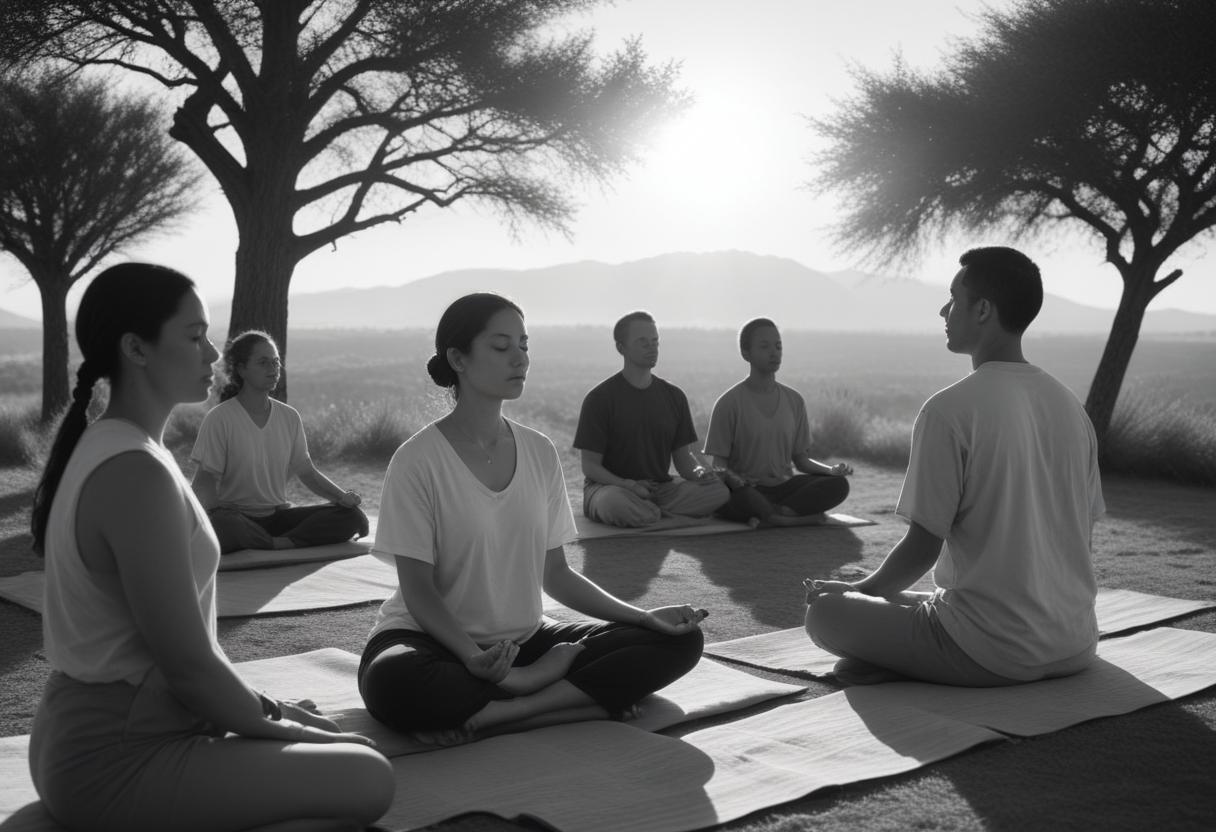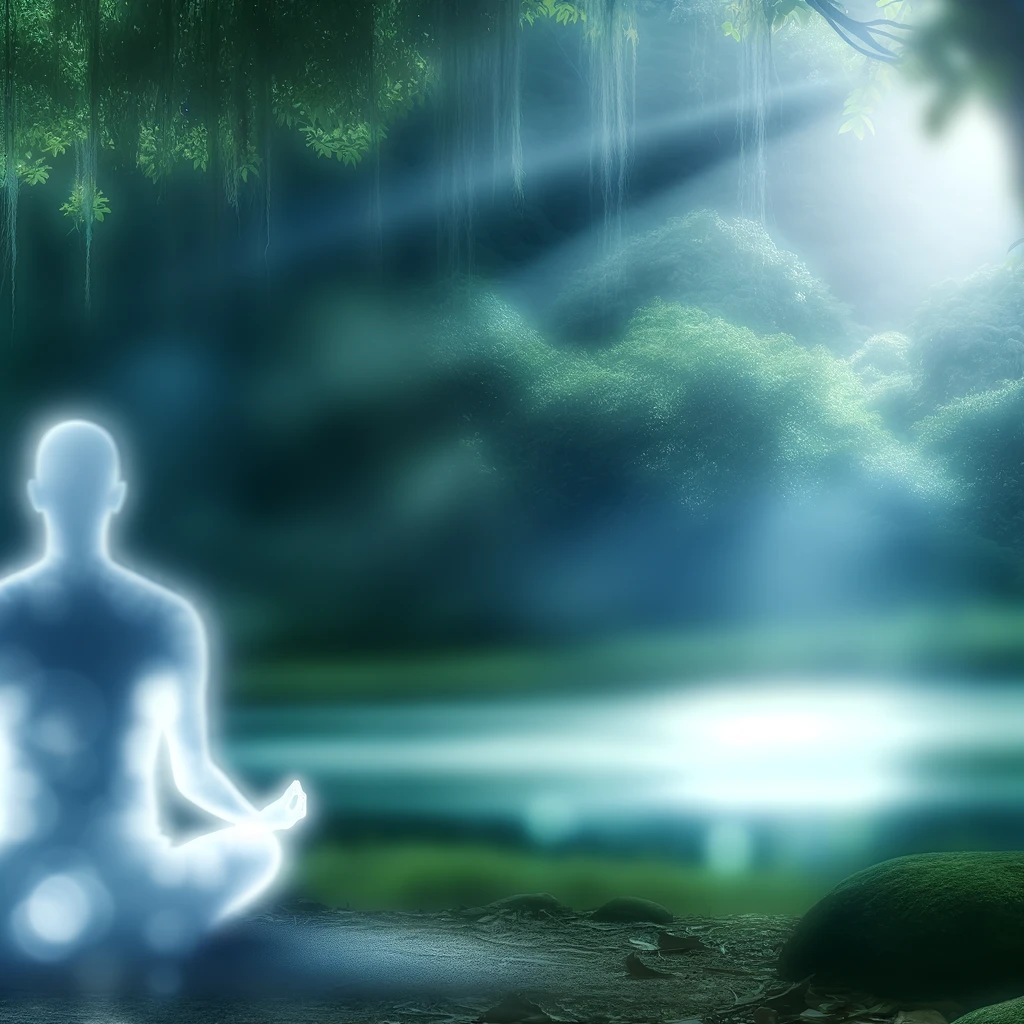
Meditation originated more than 5000 years ago and is a technique used in the development of calmness, mental well-being, and spirituality. Arising from the religious practices of India it was adopted by Hinduism, Buddhism and other belonging systems of beliefs. As time passed meditation changed and other people accepted it as the way to get a piece of calmness in a world full of stress. It is an act of having mind control and being calm. Meditation is the process of getting to an inner harmony that is a state of tranquility and serenity with least interference of other thoughts.
On the contrary, inner peace is not only a state of temporary calm but also the preparation for moving to higher levels of consciousness. In fact, the purpose of most forms of spirituality such as yoga and meditation is gaining spiritual insights. Satori is the state of awakening to the divine self and spirituality leaving behind the mundane and the self-ego. This is usually referred to as the place that fosters the ability to see the connectedness of all things. Serenity is paramount in this process; anything less is a source of distraction from desires, fears and attachment that cloud the mind. Meditation enables one to clear the mind and rid his or her self of all the interferences that hinder one from seeing the self and the connection of life.
Meditation techniques to help with inner peace
Forgiveness Meditation
Anger, grudges, and guilt are some of the feelings addressed in forgiveness meditation normally in a form of a guided meditation. They are not the same as approving the misconduct or even to one self, but allowing yourself to let go of holding the negative feelings towards the offender or yourself. This practice assists in eliminating any bitter feelings that may be harbored in the heart making it impossible to attain true peace.
Forgiveness meditation in real sense entails getting into a quiet room and closing your eyes and picture the face of the fellow you want to forgive. Mutter the words ‘I forgive you and I release you’ in this case you begin to ease the burden and let peace in.
Gratitude Meditation
The act of gratitude meditation brings a lasting shift in perception from scarcity to the use of abundance as people are made to shift their focus to positive things around them. It helps the practitioner to focus on the things that one needs to be thankful for in life and this in turn leads to good health of the mind and heart plus high level of satisfaction. As to this one, one just sits and vocalizes that there are things one is thankful for, such as friends and family, their health, or things around them like the love of the sun and the stars.
Gratitude meditation is directed at developing a calm and positive attitude towards life while turning all possible sources of stress into things to be grateful for.
Color Meditation
Colour meditation is a form of visualization in which one has to choose a certain colour for the purpose of controlling the temper and curing the self. Every hue in them has a particular energy and can change the manner in which we feel. For instance, blue means steadiness, and tranquility behind a scene, whereas yellow belongs to joy and energy.
In color meditation, the sitter imagines himself being engulfed in a specific color associated with the feeling or virtue he or she wants to cultivate. They concentrate on this color and let it embody their feelings before letting it cleanse them of all the resentment and replace it with serenity and balance.
Chakras and Their Role in Achieving Peace
According to the yogic tradition, people’s bodies have seven primary wheels which are called chakras. These chakras are located vertically on the spine and each Site chakra relates to the physical, emotional and spiritual dimensions of our being. If the energy or the prana is free to flow through these chakras then one enjoys good health, mental balance and world peace. However when they are blocked, or in body /mind imbalance, they can also affect ones mind and body.
The Seven Chakras
Root Chakra (Muladhara)
- Color: Red
- Location: Base of the spine
- Represents: Stability, grounding, and survival
- Meditation Focus: Visualizing the color red at the base of your spine can help you feel more grounded and secure in your life.
Sacral Chakra (Swadhisthana)
- Color: Orange
- Location: Lower abdomen
- Represents: Creativity, sexuality, and emotions
- Meditation Focus: Visualizing orange helps you tap into your emotional balance and creative energy.
Solar Plexus Chakra (Manipura)
- Color: Yellow
- Location: Navel area
- Represents: Personal power, confidence, and willpower
- Meditation Focus: Focusing on yellow brings confidence and assertiveness, aiding in making empowered decisions.
Heart Chakra (Anahata)
- Color: Green
- Location: Center of the chest
- Represents: Love, compassion, and connection
- Meditation Focus: Green represents love and compassion, and visualizing this color helps open the heart to both giving and receiving love.
Throat Chakra (Vishuddha)
- Color: Blue
- Location: Throat
- Represents: Communication and self-expression
- Meditation Focus: Focusing on blue fosters clear communication and truthful expression.
Third Eye Chakra (Ajna)
- Color: Indigo
- Location: Between the eyebrows
- Represents: Intuition and insight
- Meditation Focus: Visualizing indigo helps develop your intuition and deepen spiritual insight.
Crown Chakra (Sahasrara)
- Color: Violet or White
- Location: Top of the head
- Represents: Spiritual connection and enlightenment
- Meditation Focus: Focusing on violet or white connects you to higher consciousness and divine wisdom.







